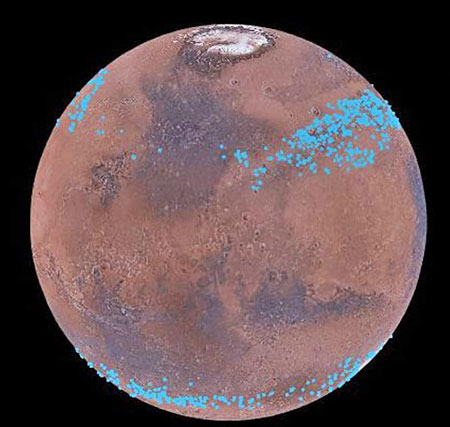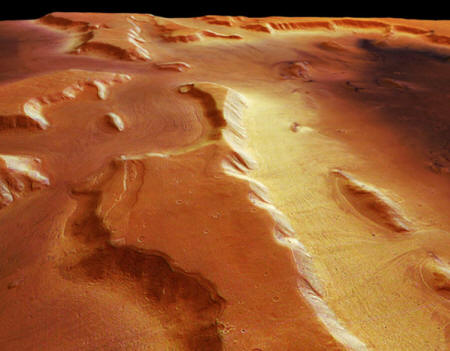|
April 12, 2015 from EarthSky Website
A thick layer of dust covers the Martian ice. Under the dust, there are glaciers made of frozen water.
Mars is known to have distinct polar ice
caps, but new measurements suggest that the planet also has belts of
glaciers at its central latitudes in both the southern and northern
hemispheres.
But radar measurements show that underneath the dust, there are glaciers composed of frozen water. New studies have now calculated the size of the glaciers and suggest the amount of water in the glaciers is the equivalent of all of Mars being covered by more than one meter of ice.
The results appear in the March 18 issue
of Geophysical Research Letters (Volume
of Martian Mid-Latitude Glaciers from Radar Observations and
Ice-Flow Modelling).
A group of researchers at the
Niels Bohr Institute have
calculated the thickness of the ice using radar observations
combined with ice flow modeling.
Karlsson said:
Nanna Bjørnholt Karlsson explained that earlier studies have identified thousands of glacier-like formations on the planet.
The glaciers are located in belts around
Mars between the latitudes 300-500 - equivalent to just south of
Denmark's location on Earth. The glaciers are found on both the
northern and southern hemispheres.
But by supplementing the sparse data
with information about the flow and form of the glaciers from the
well-studied areas, they have been able to calculate how thick and
voluminous the ice is across the glacier belts.
That the ice has not evaporated out into space could actually mean that the thick layer of dust is protecting the ice. The atmospheric pressure on Mars is so low that water ice simply evaporates and becomes water vapor.
But the glaciers are well protected under the thick layer of dust, say the scientists.
|


